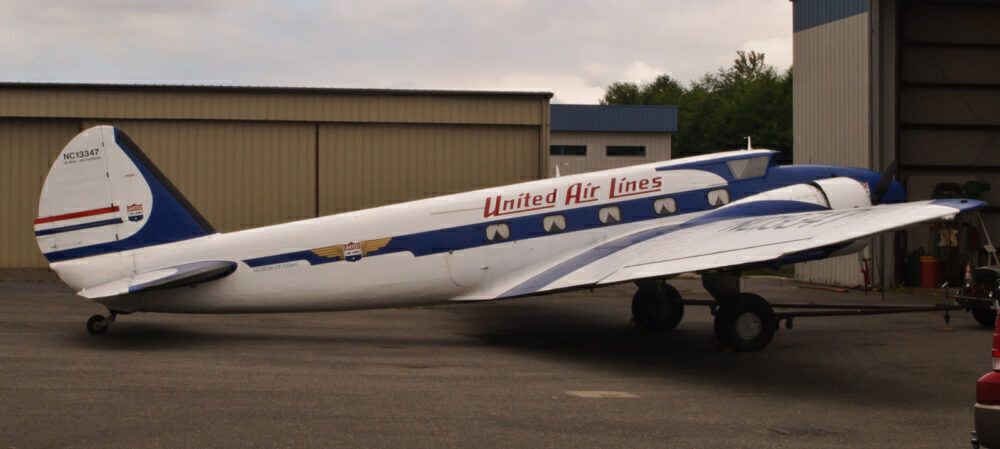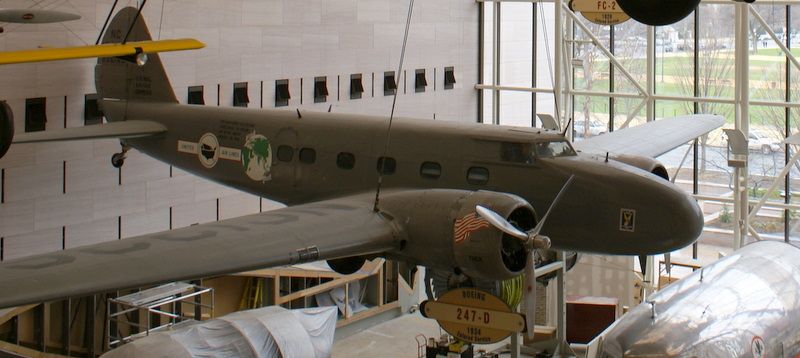Considered by many to be the first modern passenger airliner, the Boeing Model 247 helped commence the era of speed, safety, and comfort in commercial air travel. The all-metal twin-engine aircraft, designed in the early thirties, had then-modern features like an autopilot, pneumatically operated de-icing equipment, and more. But how did this revolutionary airplane come to be, and what did it do for aviation?
The little airplane that could
In the years leading up to the inception of the 247, Boeing had designed the Model 200 Monomail and B-9 Bomber. Advancements in aerodynamics and technology helped these models achieve greater speed than their predecessors, so Boeing continued to advance these designs for use on passenger aircraft. Its fully cantilevered wing design and retractable landing gear helped minimize drag and facilitated a top speed of over 180 mph.
Compared to other passenger airliners at the time, such as the Fokker F VII and Ford Trimotors, Boeing's Model 247 was far faster and more capable. Additionally, after World War I, operators looked for more multi-engine aircraft options, considered much safer and economically viable for longer routes and flights over water. Fortunately, the 247 featured two 500-horsepower Pratt & Whitney engines and, thanks to variable pitch propellers, could climb to and maintain flight at 11,000 feet even with one engine out while carrying a full load.
Who used Boeing's 247, and where did it go?
Significant for the market in the thirties, Boeing produced 75 models of the plane, with most going to Boeing Air Transport and United Airlines and a couple to Lufthansa and a private owner in China. They were designed to carry ten passengers and required a flight crew of three.
Trans World Airlines (TWA) sought to update their fleet with the 247 around this time, but with most models reserved for Boeing and United, they turned to Douglas in a move that would eventually result in the development of the DC-3. Several Model 247s were converted into transports and trainers for military service in World War II, while a few stayed around through the 1960s.
Traveling from New York to Los Angeles took the Boeing 247 about 20 hours with seven stops. Today this trip takes around six hours nonstop, depending on the aircraft used, but for its time, the 247s cross-country achievement was groundbreaking, shaving off seven and a half hours compared to other passenger airliners. Boeing's aircraft took part in other air races, most notably the MacRobertson Trophy Air Race from London to Melbourne.
Love aviation history? Discover more of our stories here
Boeing's Model 247D, a version of the 247 made for racing, completed the Kangaroo Route in October 1934. Pilots Col. Roscoe Turner and Clyde Pangbourne made the trip in under 93 hours, securing 3rd place behind a Douglas DC-2 and de Havilland DH.88 Comet.
Did the plane experience any significant events?
In its lifetime, the Boeing 247 was involved in several incidents; however, one particularly notable event occurred on October 10, 1933. A 247 that flew United Air Lines Trip 23, from Cleveland, Ohio, to Chicago, Illinois, is considered the first commercial airliner to be the victim of sabotage. While just south of Chesterton, Indiana, a nitroglycerin bomb in the cargo compartment went off, destroying the plane and everyone onboard.
Sources: Boeing, National Air and Space Museum, Museum of Flight, Aviation History, This Day in Aviation



